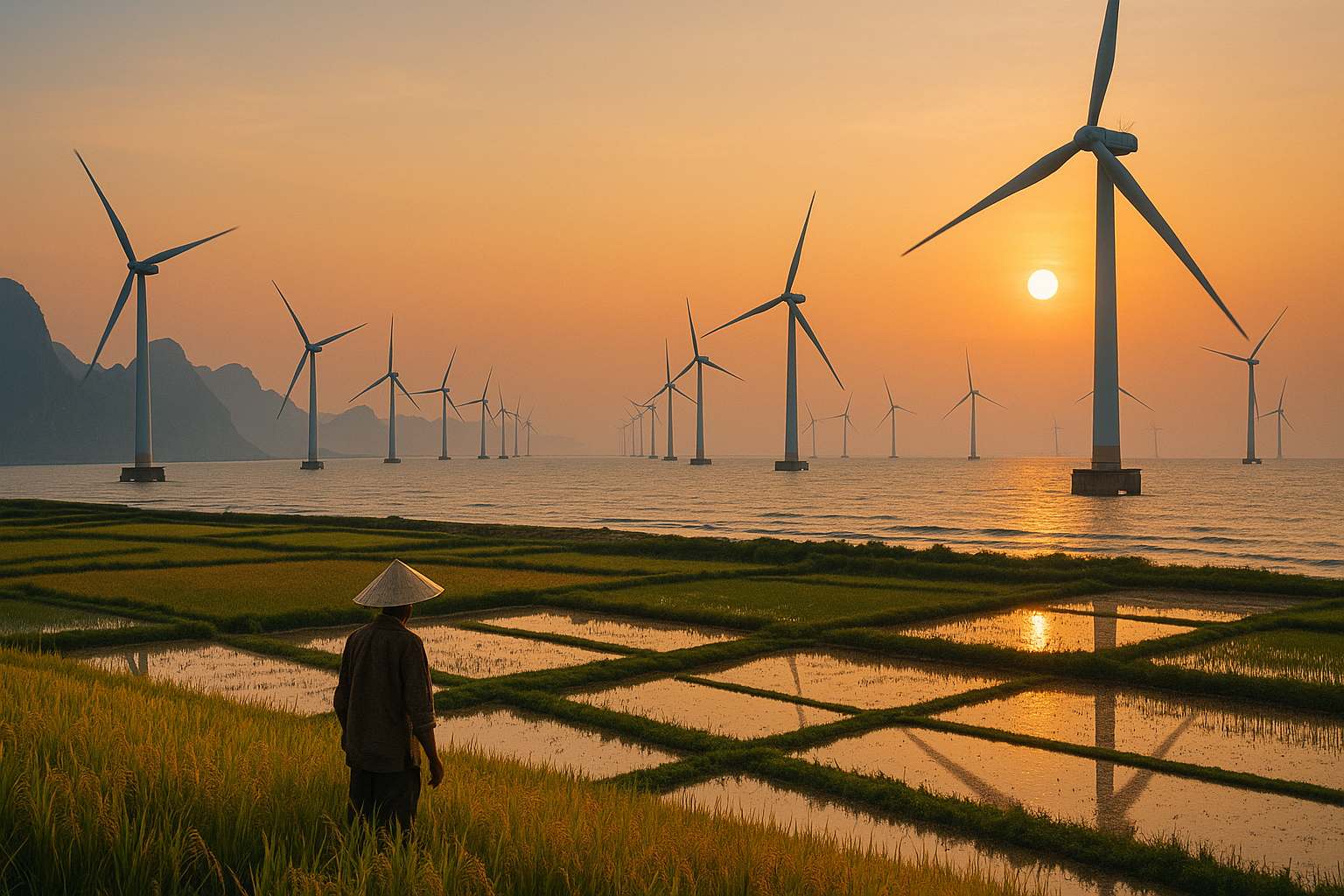Seizing the Wind: How Vietnam Can Lead Asia’s Clean Energy Transition
The World Bank and IFC report positions Vietnam’s vast offshore wind potential as a strategic opportunity for clean energy, economic growth, and climate leadership. Yet it warns that without swift regulatory reforms and infrastructure investment, the country risks losing its competitive edge to regional rivals.

The report, prepared jointly by the World Bank Group and the International Finance Corporation (IFC) with contributions from leading energy research institutes, unfolds as both a development strategy and an investment roadmap for Vietnam’s offshore wind sector. It begins with a strong recognition that offshore wind is no longer a peripheral technology but a vital pillar of the global energy transition. Vietnam, the report argues, is uniquely positioned to take advantage of this momentum thanks to its natural endowments. With a coastline stretching more than 3,000 kilometers, Vietnam possesses some of the richest offshore wind resources in the world. Maps and resource charts included in the document illustrate this extraordinary potential, demonstrating that with the right approach, the country could generate tens of gigawatts of clean electricity. This would not only secure domestic supply but also create opportunities for power exports, effectively positioning Vietnam as a renewable energy hub in Southeast Asia.
Barriers to Unlocking Potential
The analysis, however, avoids painting an overly optimistic picture. It stresses that the journey toward becoming a leader in offshore wind is beset with challenges, particularly institutional and regulatory ones. The most immediate hurdles are fragmented permitting procedures, a lack of a clear seabed leasing regime, and the absence of long-term, bankable power purchase agreements. These gaps make it difficult for international investors to commit the scale of capital required to develop offshore projects. The report makes clear that while international interest in Vietnam’s market is strong, without reforms, the country risks falling behind regional competitors like Taiwan and South Korea, both of which have advanced regulatory frameworks and are moving rapidly.
Economic Promise on the Horizon
To demonstrate what Vietnam could gain, the report deploys economic modeling that highlights both the feasibility and the advantages of embracing offshore wind. By 2030, the country could realistically install between 5 and 10 gigawatts of capacity, a scale that would firmly establish it as a global player in renewables. Cost projections are particularly striking: as technology matures, turbine prices decline, and local supply chains expand, offshore wind could achieve parity with fossil fuels earlier than expected. Graphs embedded in the mid-section of the report trace these downward cost curves, showing how policy clarity and infrastructure investments can accelerate the trend. Beyond electricity generation, the benefits extend into job creation, industrial diversification, and port modernization. Offshore wind could catalyze a new industrial ecosystem that reduces dependency on imported coal and gas while stimulating domestic economic growth.
Policy Reforms as the Key
Policy recommendations are presented throughout the report in a pragmatic yet ambitious tone. A unified seabed leasing system modeled on international best practice is described as essential, along with streamlined permitting procedures that reduce overlaps across government agencies. The authors emphasize the importance of bankable long-term contracts and tariff mechanisms to attract international financing. The report also highlights infrastructure as a decisive factor: investments in grid expansion, offshore transmission, and coastal ports are critical to anchoring the sector domestically. Equally important is workforce training, which can help Vietnam build a skilled labor base rather than relying heavily on foreign expertise. Diagrams and flowcharts in the later chapters show how integrated planning, balancing offshore wind farms with fisheries, shipping routes, and environmental protection, could mitigate conflicts while maximizing national benefits.
Climate Leadership and Urgent Action
The climate and environmental dimensions are woven tightly into the report’s narrative. Offshore wind, if scaled up, is depicted as a central lever for Vietnam’s pledge to reach net-zero emissions. Displacing coal-fired power, it would significantly reduce greenhouse gas emissions while improving air quality and public health. Offshore wind is thus framed not only as an economic or environmental issue, but also as a social one. International partnerships are strongly encouraged, with the report pointing to opportunities for global financing, technology transfer, and cross-border power trade. The conclusion is a powerful call to action: offshore wind is presented not just as a new energy option but as a strategic tool for sustainable growth, energy independence, and climate credibility. Yet the urgency is unmistakable. Unless regulatory reforms are enacted quickly, Vietnam could squander this unique opportunity and see its neighbors dominate the offshore wind race.
- FIRST PUBLISHED IN:
- Devdiscourse
ALSO READ
Contracting Carbon: The World Bank’s Blueprint for High-Integrity Climate Solutions
Carolina Rendón Named World Bank Resident Representative for Dominican Republic
World Bank Urges Mongolia to Seize Mining Boom for Crucial Fiscal Reforms
World Bank Joins MADE Alliance to Drive Africa’s Digital Transformation
World Bank Approves $50M Grant to Boost Competition and Inclusion in Tajikistan










